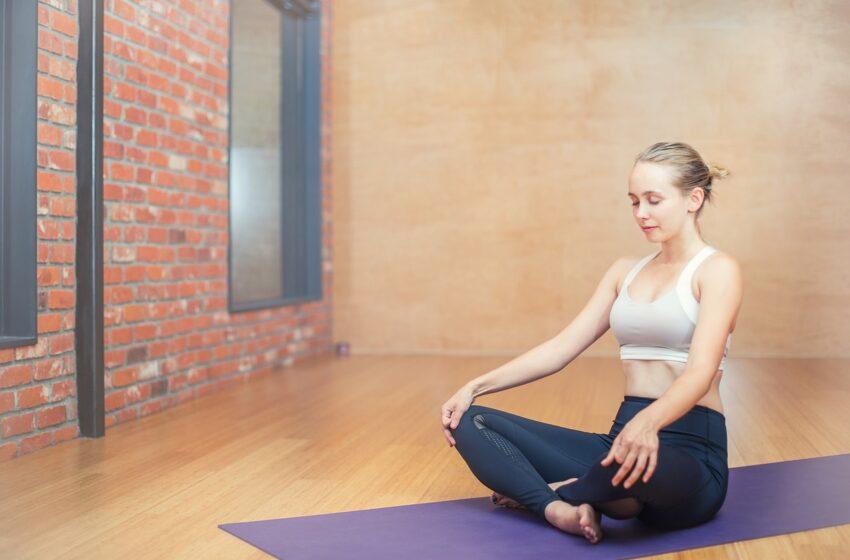The Latest Trend In Physical Fitness

Are you considering beginning a physical fitness regimen? Bravo for you! Your journey to a better living is only five steps away.
One of the finest things you can do for your health is start a workout regimen. Exercise may help you lose weight, increase your balance and coordination, lower your chance of developing chronic diseases, and even enhance your sleep patterns and sense of self-worth. There is further good news. A physical fitness program may be started in only five simple steps.
1. Determine your level of fitness
You likely have some concept of your level of physical fitness. However, calculating and documenting your baseline fitness scores might provide you with standards by which to compare your development. Consider recording: To evaluate your flexibility, physical strength, and body composition:
- Your heart rate before and just after a mile (1.6 kilometers) of walking
- How much time it takes to run 1.5 miles (2.41 kilometers) or walk 1 mile
- How many pushups, either regular or modified, you can do at once
- How far you can stretch your legs out in front of you when sitting on the floor.
- your waist’s measurement at the top of your hips
- The BMI you’re at
2. Create your exercise plan
It’s simple to state that you’ll work out each day. You’ll need a plan, however. Keep the following in mind when you create your training program:
Think about your physical fitness goals. Are you beginning a workout regimen to aid with weight loss? Or do you have another driving force, like training for a marathon? Having specific objectives might help you monitor your progress and maintain motivation.
Make a regimen that is balanced. Get 75 minutes of severe aerobic exercise, 150 minutes of moderate aerobic exercise, or a mix of the two per week. The instructions advise spreading out this activity over the course of a week. At least 300 minutes per week are advised to provide even higher health benefits and help with weight reduction or sustaining weight loss.
But even a little bit of exercise is beneficial. The cumulative effects of being active throughout the day might be beneficial to your health.
At least twice a week, do strength-training activities for all the main muscle groups. Each exercise should be performed once with a weight or resistance level that causes your muscles to get fatigued after 12 to 15 repetitions.
Start small and go slowly. When you first start exercising, go carefully and with caution. Consult your doctor or an exercise therapist for assistance in creating a physical fitness regimen that progressively increases your range of motion, strength, and endurance if you have an injury or a medical condition.
Include exercise in your everyday regimen. Finding the time to work out might be difficult. Make it simpler by scheduling exercise time just as you would any other appointment. Plan to read while riding a stationary bike, watch your favorite program while walking on the treadmill, or take a break to go for a stroll at work.
Consider a variety of activities. Cross-training helps prevent exercise monotony by mixing up your workouts. Using low-impact exercises like bike or water exercise as cross-training decreases your risk of overusing a particular muscle or joint or becoming injured. Plan to alternate between exercises that target various body regions, such as walking, swimming, and strength training.
Consider engaging in high-interval training. You engage in brief bursts of high-intensity exercise during high-interval intensity training, followed by recovery intervals of low-intensity exercise.
Allocate time for rest. Many individuals begin working out with an excessive amount of passion, working out for too long or too hard, and then quit when their muscles and joints start to hurt or feel painful. Schedule recovery and rest periods for your body in between workouts.
Put it in writing. Having a documented strategy in place could help you remain motivated.
3. Put your equipment together
Most likely, you’ll begin with sports shoes. Choose footwear specifically made for the activity you have in mind. For instance, cross-training shoes are more supportive yet weigh less than running shoes.
If you’re going to spend money on workout equipment, get one that will be useful, fun, and simple to use. Before buying your own equipment, you may wish to test out certain kinds at a fitness facility.
You may think about utilizing fitness applications for smart devices or other activity monitoring gadgets, such ones that can monitor your heart rate, measure your distance traveled, and track calories burnt.
4. Start out
You may now take action. Keep these suggestions in mind when your workout regimen gets started:
Start out softly and progressively increase. Give yourself plenty of time to stretch or take a leisurely stroll to warm up and cool down. Then pick up the pace until you can maintain it for five to ten minutes without becoming too exhausted. Increase your workout time progressively as your endurance becomes better. Work your way up to exercising for 30 to 60 minutes most days of the week.
Break things apart if necessary. You may spread out your workout throughout the day; you don’t have to do it all at once. There are also aerobic advantages to shorter but more frequent workouts. A few little workouts throughout the day may fit into your schedule more conveniently than a single 30-minute workout. Anything you do is preferable to doing nothing at all.
Be innovative. You may mix up your training regimen with other exercises like walking, cycling, or rowing. Don’t stop there however. Spend a night ballroom dancing or go on a weekend walk with your family. Find enjoyable things to include into your training regimen.
Be aware of your body. Take a pause if you experience discomfort, breathlessness, vertigo, or nausea. You could be exerting too much effort.
Be adaptable. Give yourself permission to take a day or two off if you’re not feeling well.
5. Track your development
Six weeks after you begin your program, and then every few months after that, retake your personal fitness evaluation. You could discover that in order to keep getting better, you need to work out for a longer period of time. Or, you could be pleasantly delighted to see that your level of exercise is just what you need to achieve your fitness objectives.
If your motivation wanes, try a different activity or make new objectives. Additionally, working out with a buddy or enrolling in a class at a gym could be beneficial.
Starting a fitness regimen is a crucial choice. However, it doesn’t have to be onerous. You may create a lifelong healthy habit by properly planning and taking it slow.
